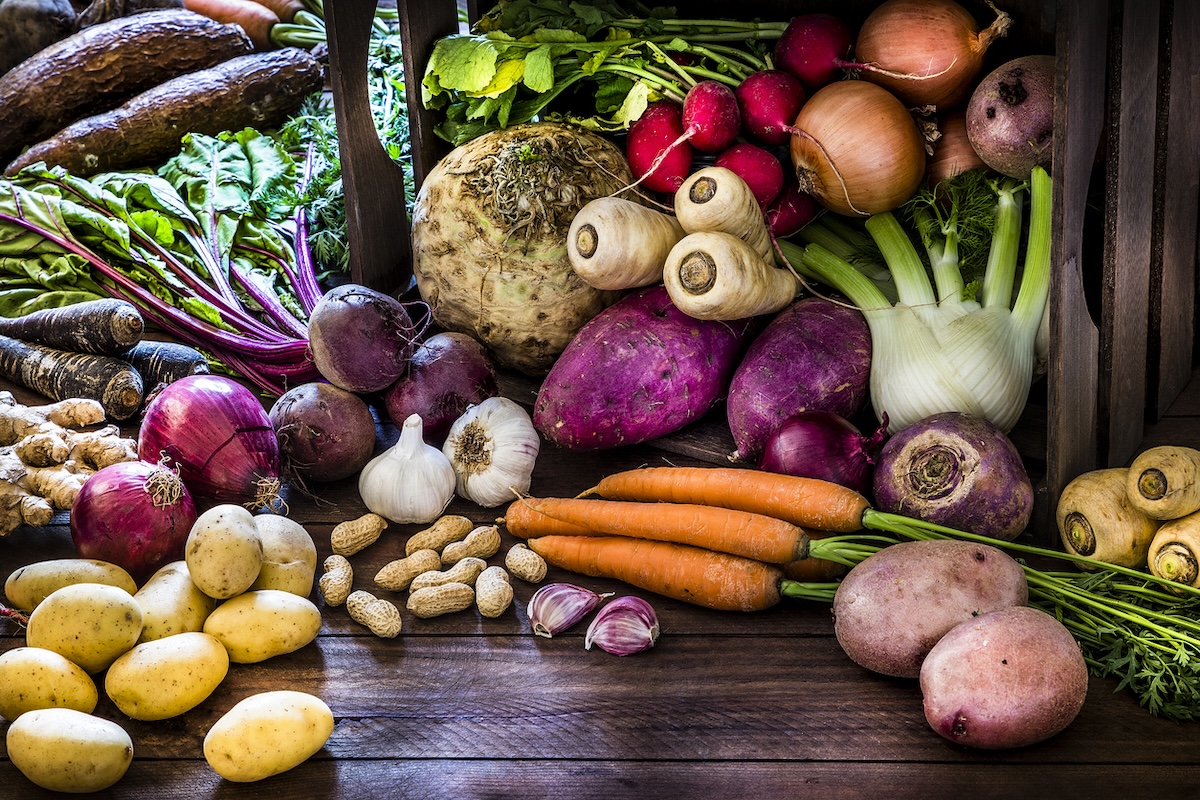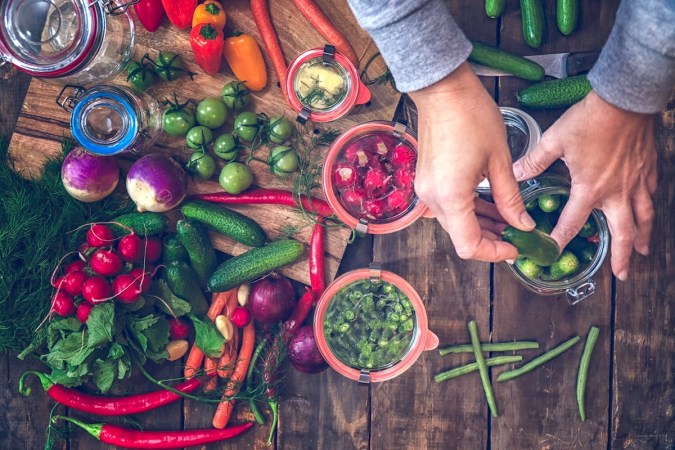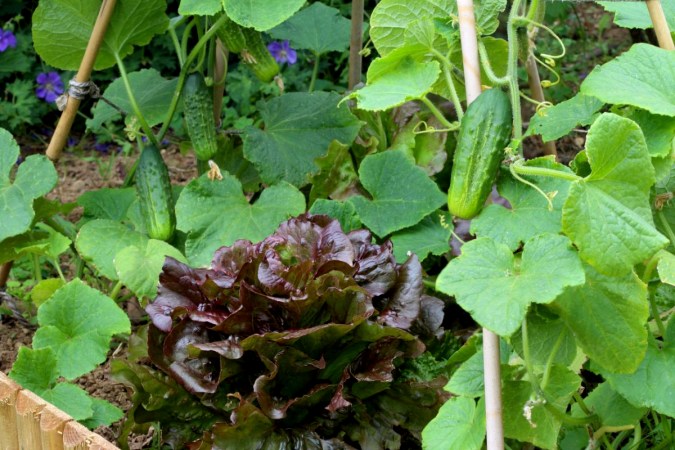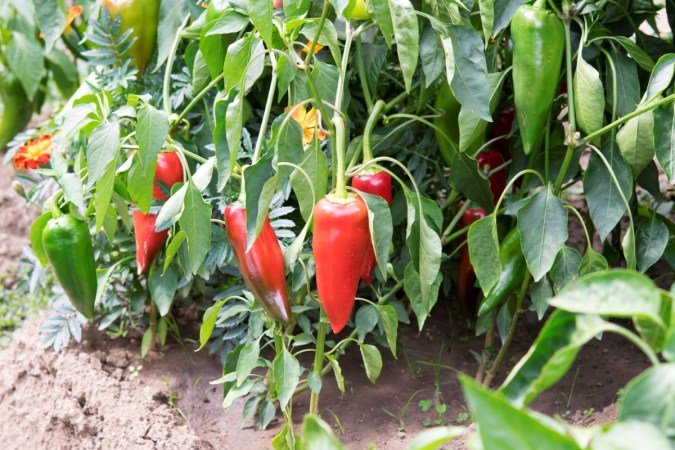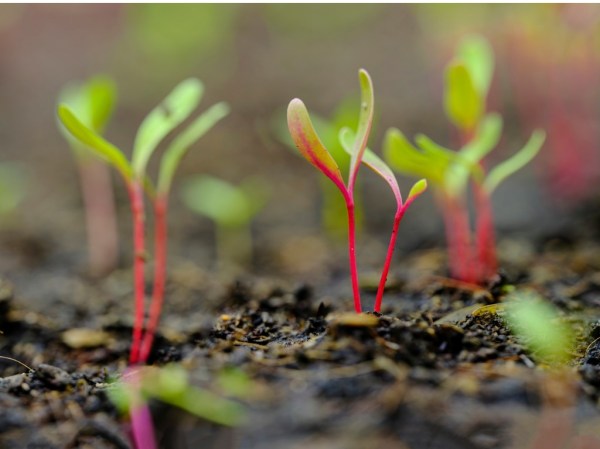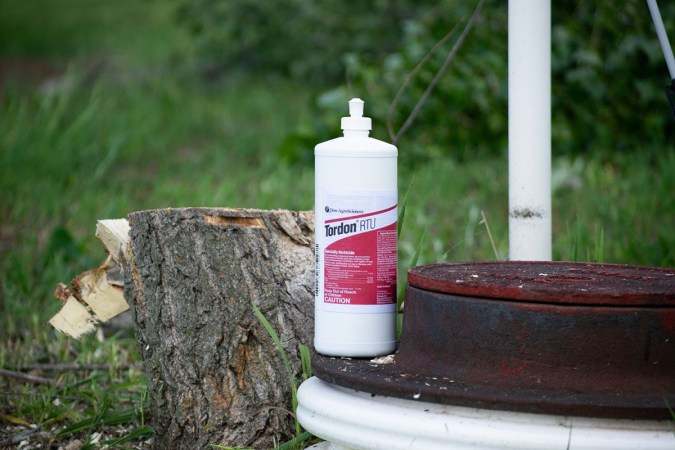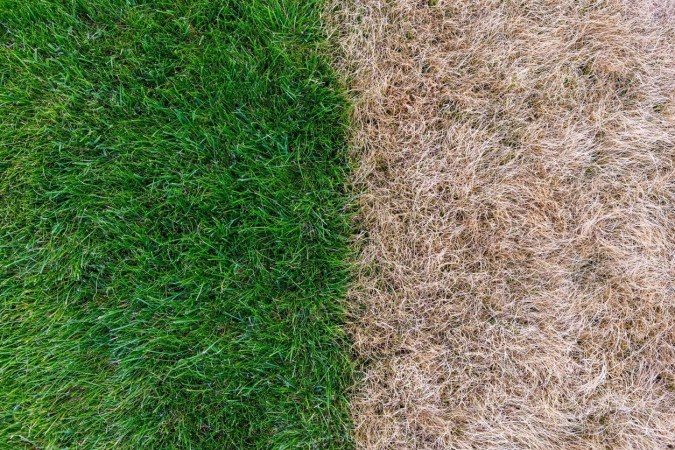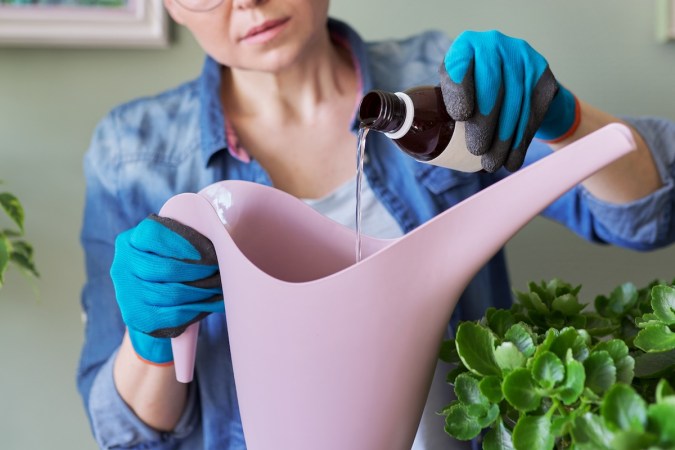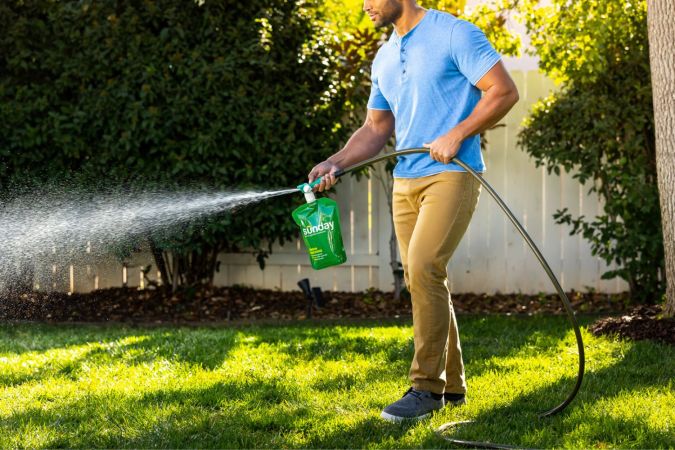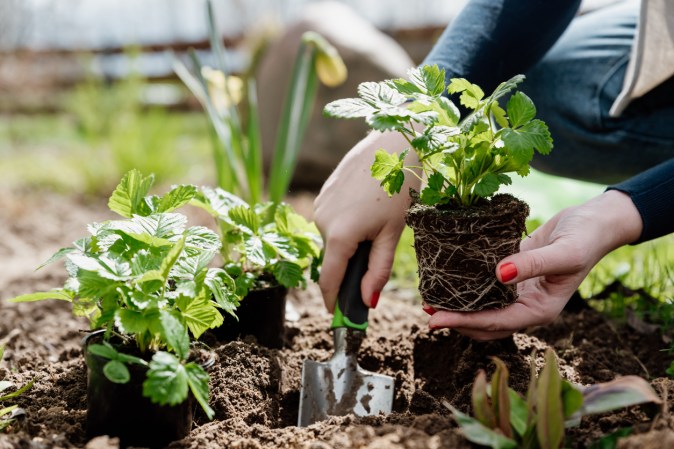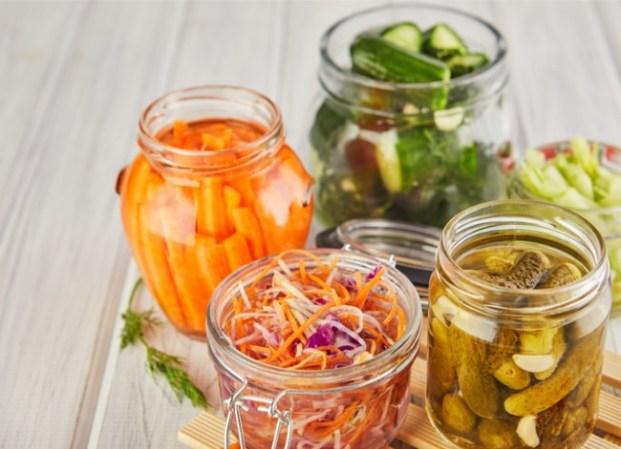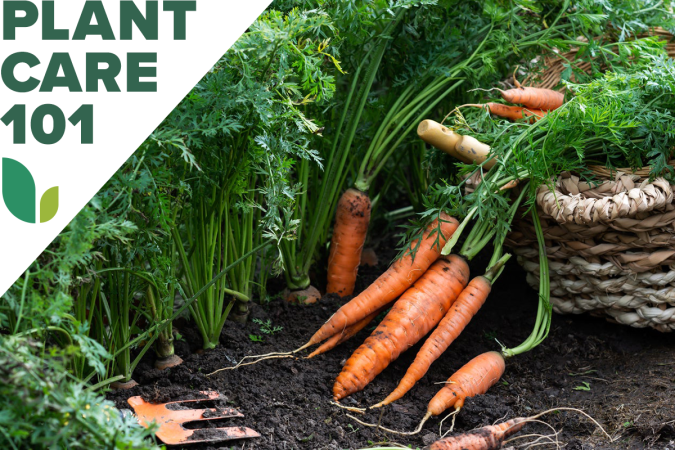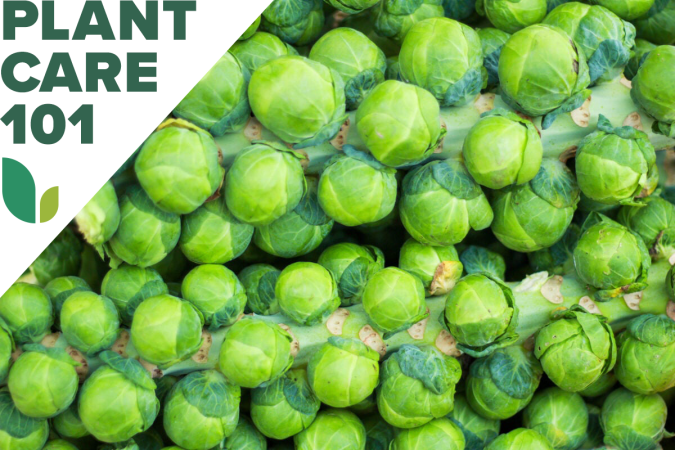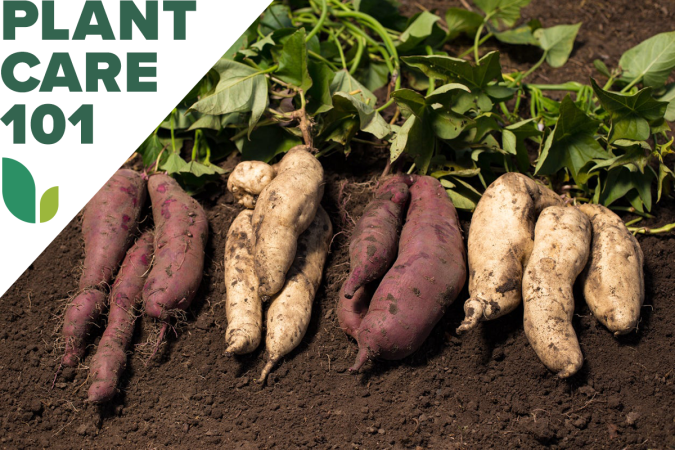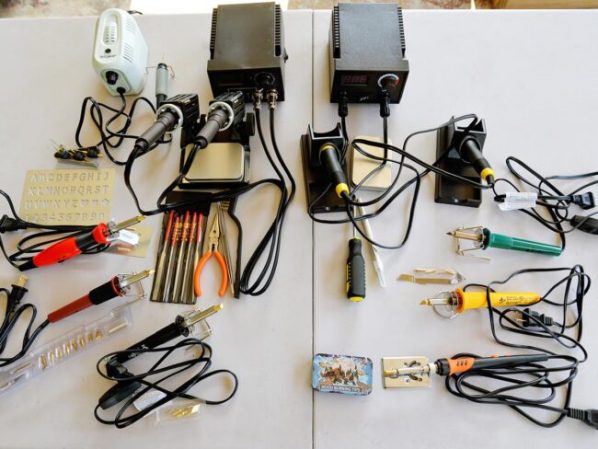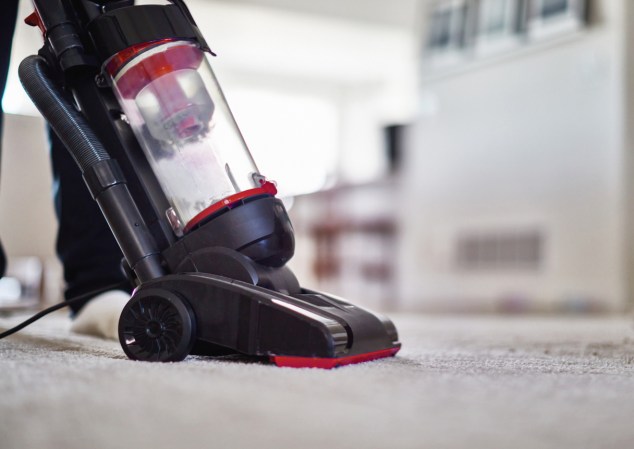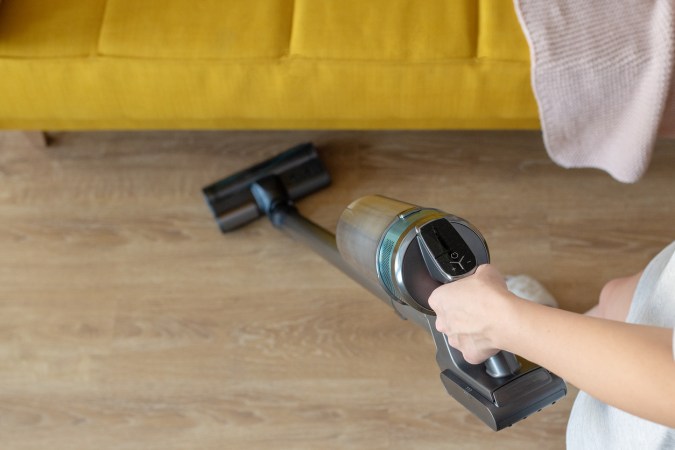We may earn revenue from the products available on this page and participate in affiliate programs. Learn More ›
As any gardener will tell you, there’s nothing quite like the taste of homegrown vegetables. During the warmer months, a well-tended garden can yield a prolific bounty of ripe and juicy tomatoes, lush lettuces, and crispy beans. But by the time winter hits, homegrown produce is often a rarity—unless you happen to have your own root cellar.
Root cellars don’t need to be lavish or large. In fact, home gardeners can make a simple DIY root cellar by burying a clean trash can in the garden and loading it full of root cellar vegetables. But if you want your produce to last through the winter, it’s important to choose the right crops for winter storage.
1. Potatoes
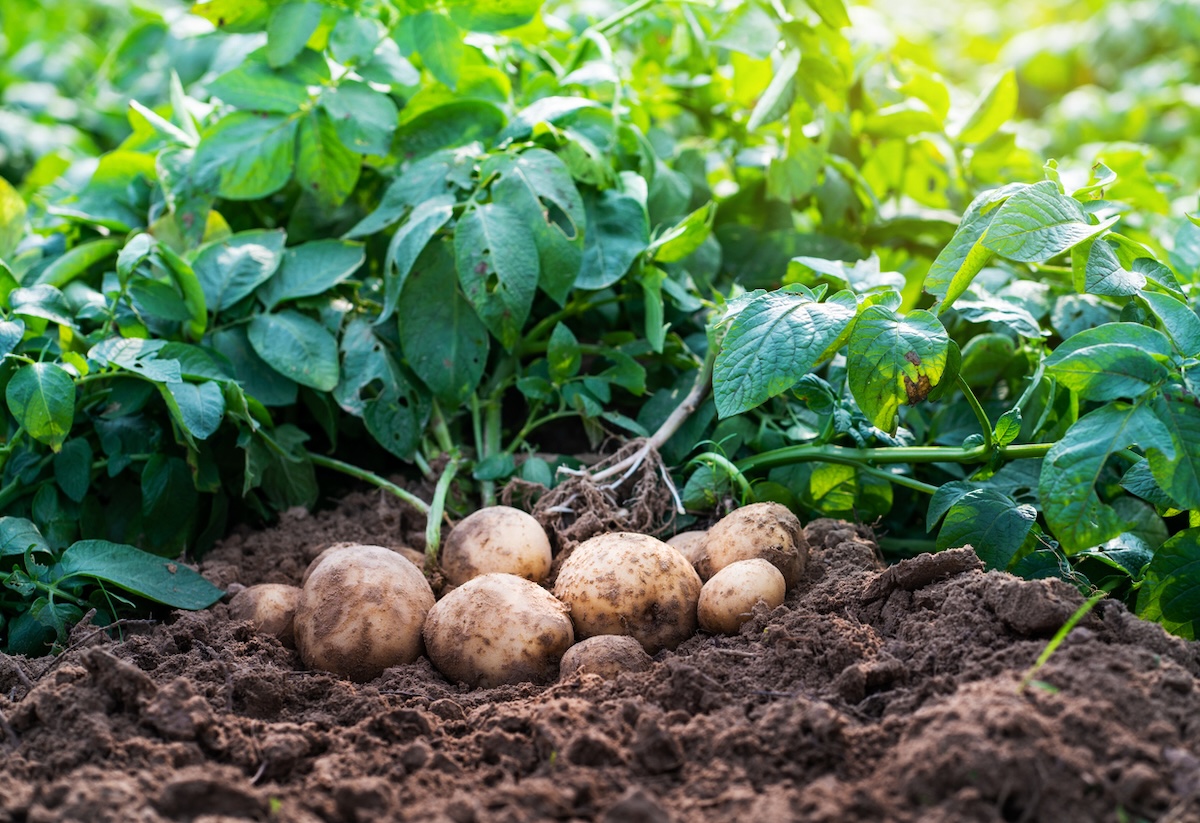
Potatoes are a quintessential ingredient in hearty soups and other cozy winter meals, so you’ll definitely want to leave some room in your root cellar for spuds. All types of potatoes can be stored in root cellars; however, late season “winter storage” potatoes with thick skins are particularly good for root cellaring as they won’t dry out as fast as thin-skinned new potatoes. Some classic picks for cellaring include German Butterball, Yukon Gold, and Red Pontiac.
When harvesting potatoes, wait until the potato leaves die back and then dig up your spuds. Damaged potatoes should be eaten right away, while pristine potatoes should be cured for a few days in a dark, dry place before storing. Airy crates and baskets will keep potatoes fresh, but be sure to shelter spuds from light so they don’t turn green!
Shelf Life: 5 to 8 months
Our Recommendation: Yukon Gold Seed Potato at Amazon for $11.99
With a rich, nutty flavor, Yukon Gold is an all-purpose potato, ideal for mashing, roasting, boiling and baking.
2. Onions
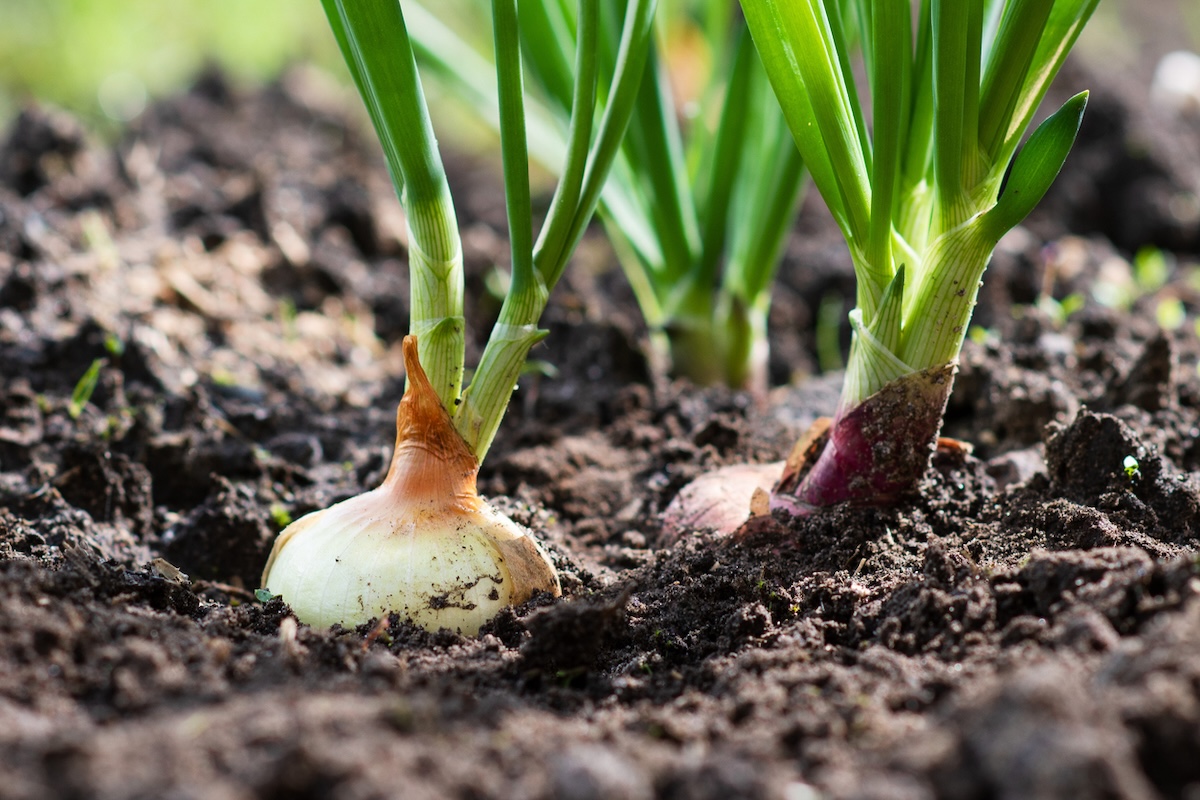
Like potatoes, onions are another must-have storage vegetable as they can be used in almost any savory dish. For best storage, harvest onions late in the season once their leaves start to flop over and their “necks” dry out. Instead of washing onions, dust dirt away and then cure onions in a warm, dry space for 2 weeks before storing them in braids, mesh bags, or well-ventilated crates.
Although onions last awhile in the fridge, not all onions are ideal for cellaring. Sweet Spanish onions will often turn mushy in root cellars, but storage onions like Stuttgarter and Red Zeppelin will last for months and months.
Shelf Life: 5 to 8 months
Our Recommendation: Stuttgarter Reisen Onion Set at Gurney’s for $7.19
Famed for their mild flavor and versatility, Stuttgarter onions can be grilled, sautéed, or eaten fresh.
3. Carrots
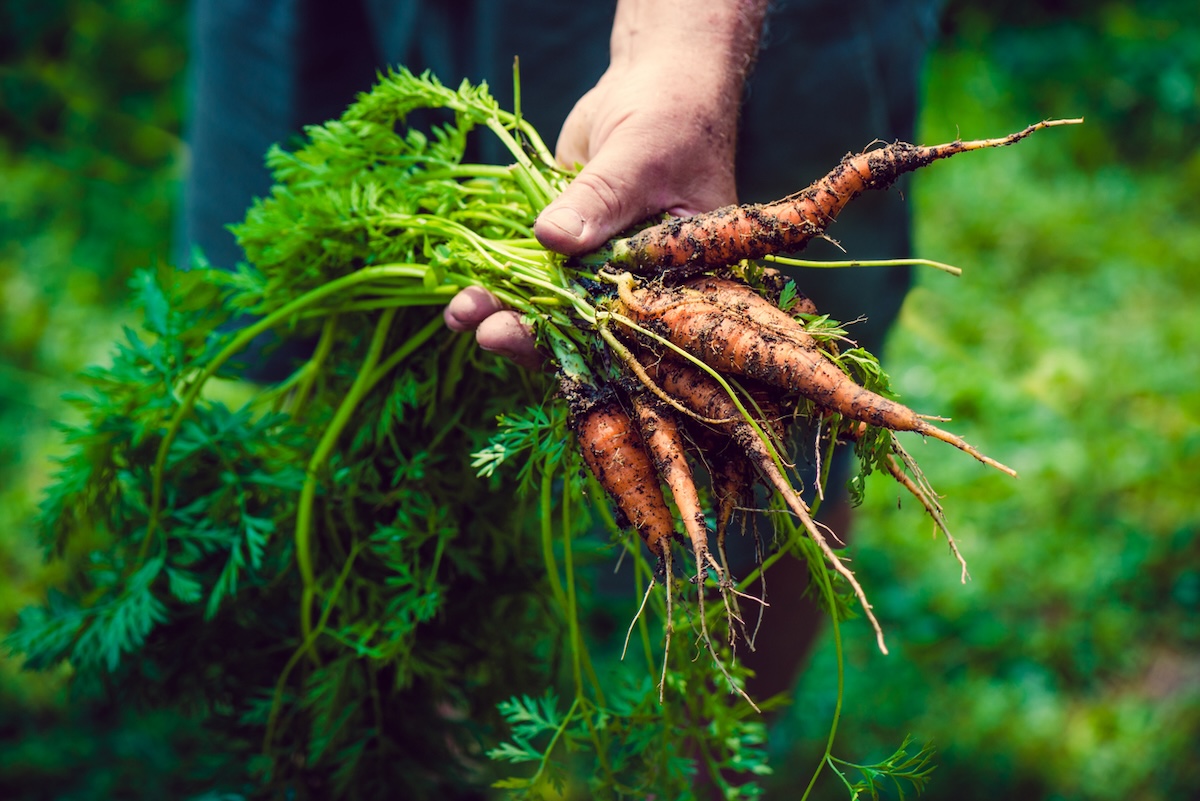
Carrots can be harvested throughout the growing season, but for winter storage, it’s best to plant a late season crop of storage carrots and harvest them before the ground freezes. Carrots don’t need to be cured as long as onions or potatoes, but they store better if they’re allowed to dry for a few days. To store, clip off carrot greens and keep the roots in well-ventilated boxes or crates, or store them vertically in containers filled with damp sand.
Shelf Life: 4 to 6 months, if packed in damp sand
Our Recommendation: Danvers Half Long Carrot Seeds at Gurney’s for $2.69
Danvers Half Long carrots have plump, orange roots that grow up to 8 inches long and last well in storage.
4. Pumpkins
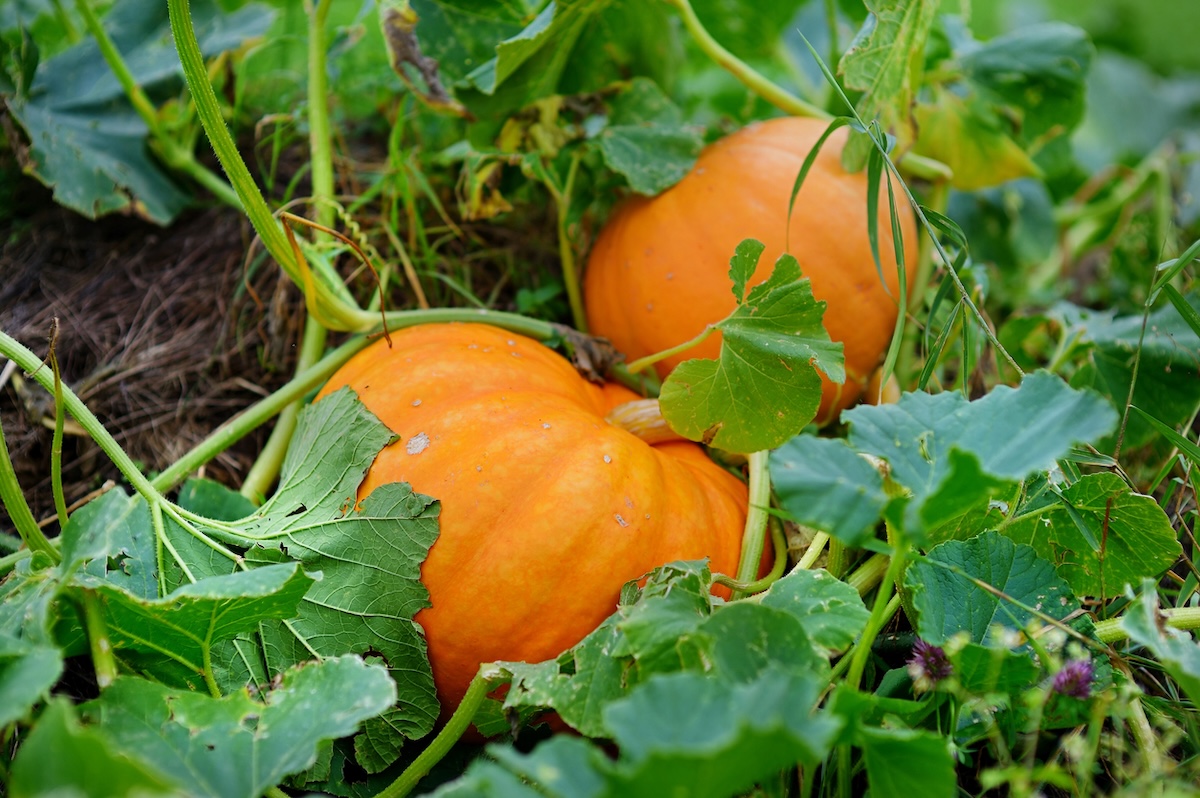
When most people think of pumpkins, they think of carving and pie making. But pumpkins are versatile veggies that can be root cellared for months and then cooked into soups, stews, casseroles, and other savory wintertime treats. For best storage, cure pumpkins for a few days after harvesting and leave a few inches of stem attached at their tops.
Shelf Life: 5 to 6 months
Our Recommendation: Pumpkin Seed Variety Pack at Amazon for $10.95
These heirloom pumpkins are good for seed saving as well as root cellaring.
5. Beets
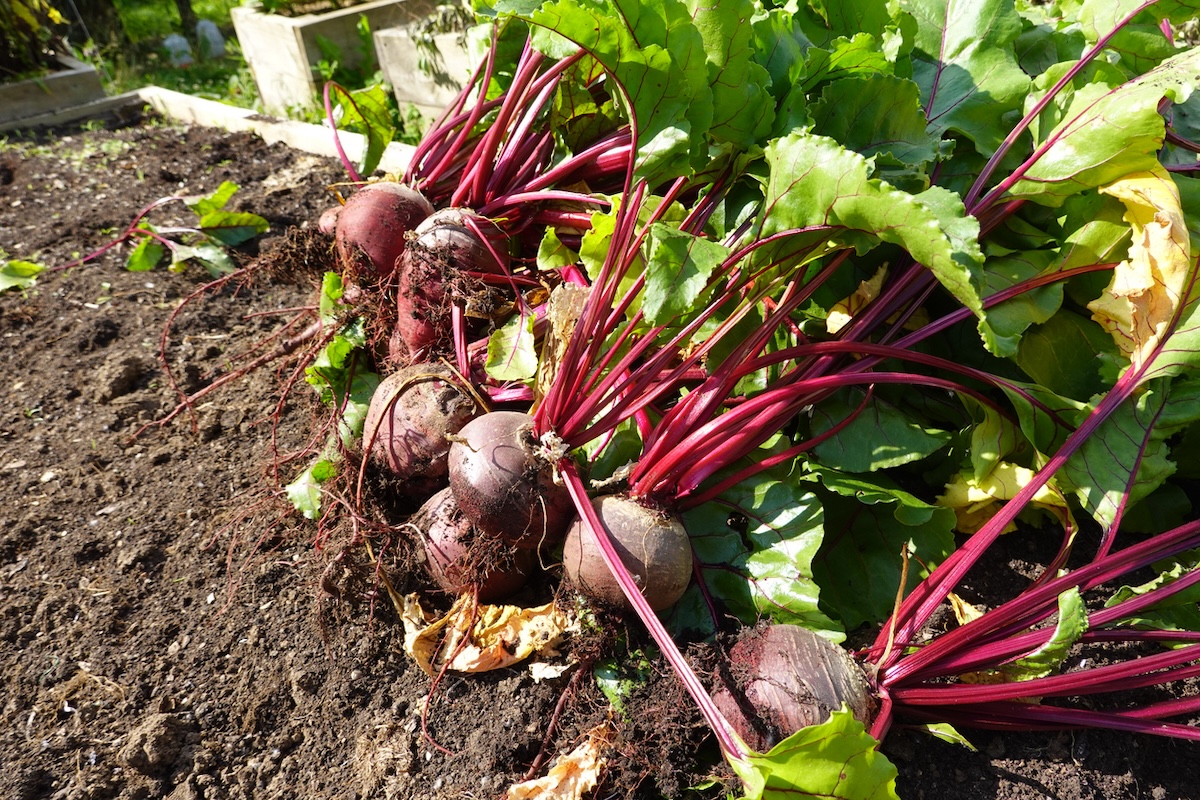
Beets and carrots have similar growing needs and they’re treated similarly in root cellars. Don’t wash beets before storing—extra moisture can make them spoil. Instead, brush away dirt, clip off beet greens about 1 or 2 inches above the top of the root, leave the slender root tip intact, and store beets in damp sand until you’re ready to eat them!
Shelf Life: 3 to 5 months
Our Recommendation: Perfected Detroit Beet Seeds at Gurney’s for $3.59
Perfected Detroit beets have deep, red flesh and they can be canned if you run out of space in your root cellar.
6. Winter Squash
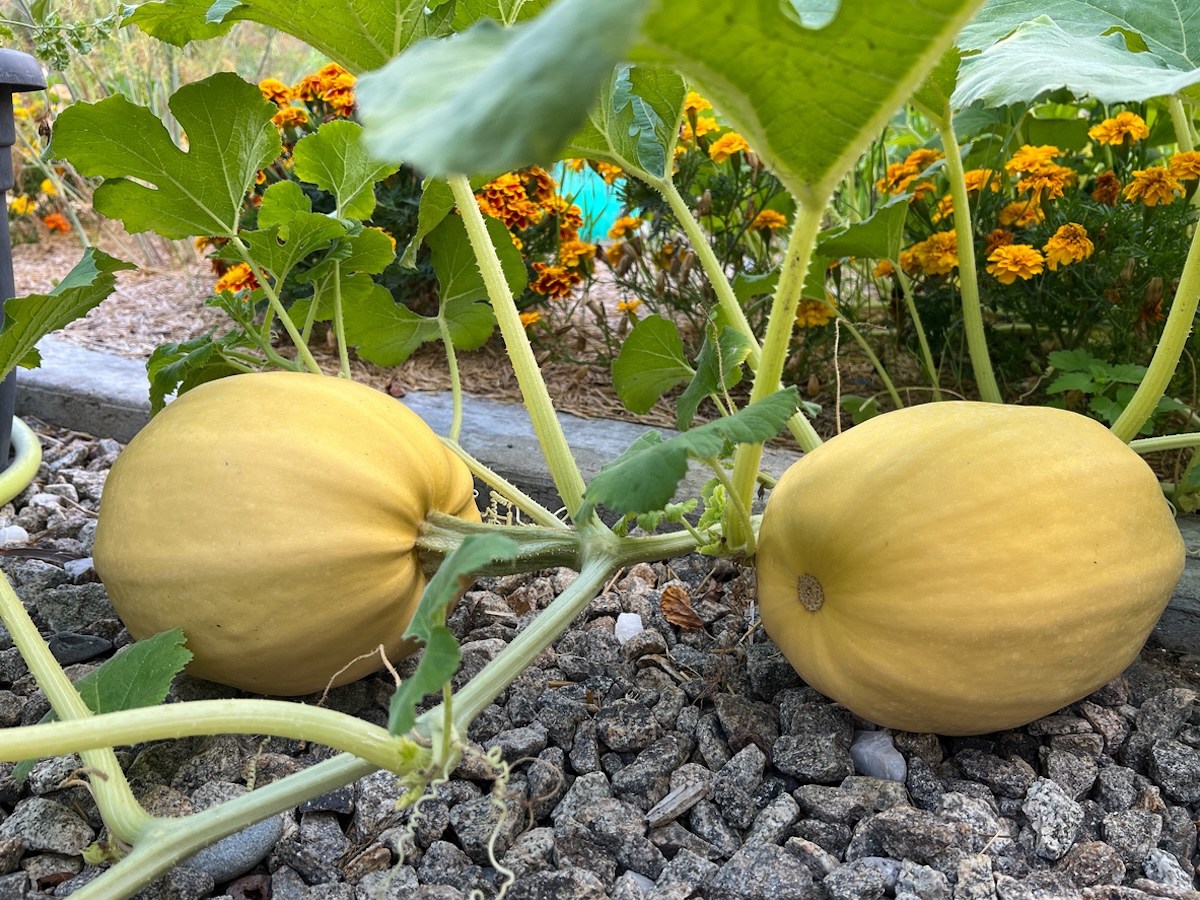
Zucchini and summer squash are summertime crops that won’t store well in a root cellar. However, winter squash, like red kuri, butternut, and acorn squashes have thick skins that help them retain water and last for months in a root cellar. After harvesting, cure winter squash for 10 days in a dark and dry place and leave a few inches of stem attached to each squash to make them last.
Shelf Life: 4 to 6 months
Our Recommendation: Waltham Butternut Winter Squash Seeds at Amazon for $3.99
Butternut squash have a mild, nutty flavor that intensifies with baking and roasting, but they also work well in soups.
7. Parsnips
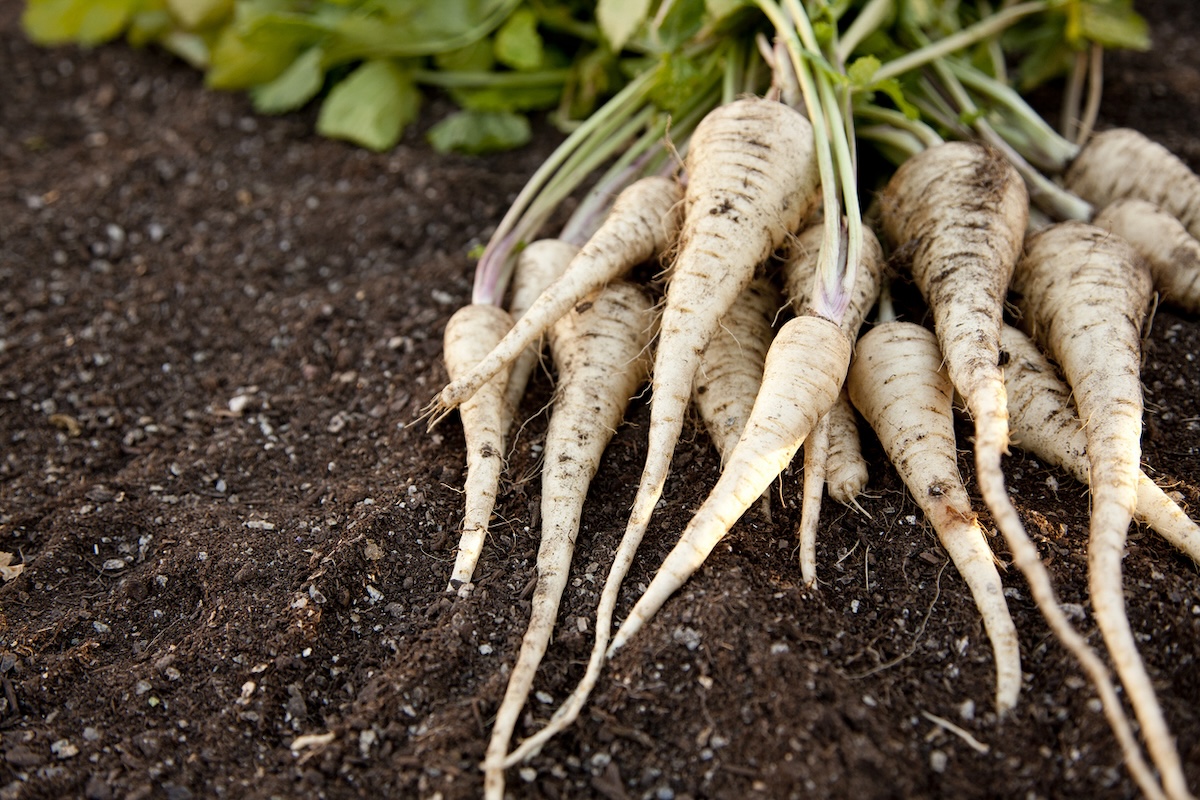
Parsnips take longer to grow than carrots, but they’re worth the wait. These veggies are typically planted in spring and harvested in fall after a light frost, which sweetens their flavor. Cut away greens and store parsnips in boxes or buckets filled with damp sand to keep them crisp.
Shelf Life: 4 to 6 months
Our Recommendation: Harris Model Heirloom Parsnip at Amazon for $4.85
Harris Model parsnips yield creamy, white roots that grow up to 12 inches long—perfect for roasting, baking, and soup-making.
8. Winter Radishes
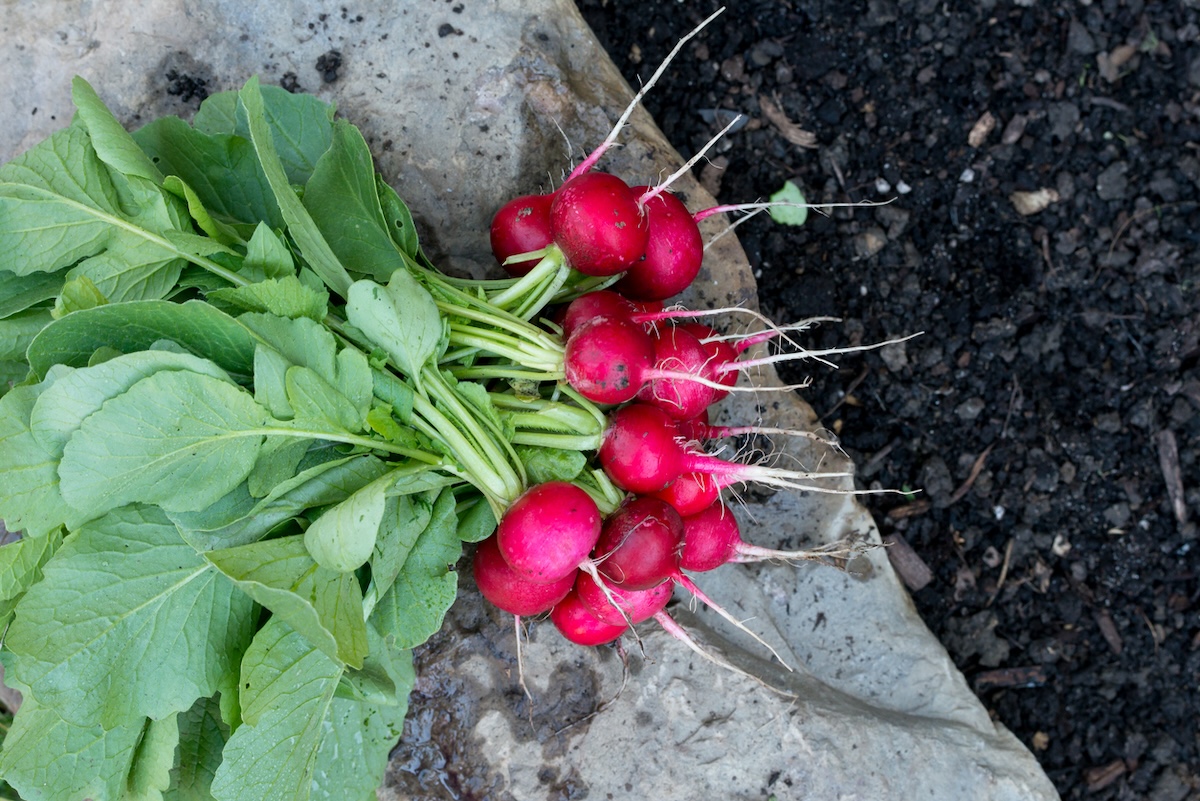
Not all radishes are created equal. Spring radishes are fast-growing plants that are prized for their brightly colored, crisp flesh; but winter radishes sport a thick skin that makes them perfect for root cellars. Look for popular varieties like Watermelon and Black Spanish and store them like carrots and parsnips—leaf-free and packed in moist sand.
Shelf Life: 2 to 3 months
Our Recommendation: Watermelon Radish Seeds at Amazon for $4.85
With bright green skin and a cherry-pink interior, watermelon radishes look like miniature watermelons, but they pack a fiery heat.
9. Garlic
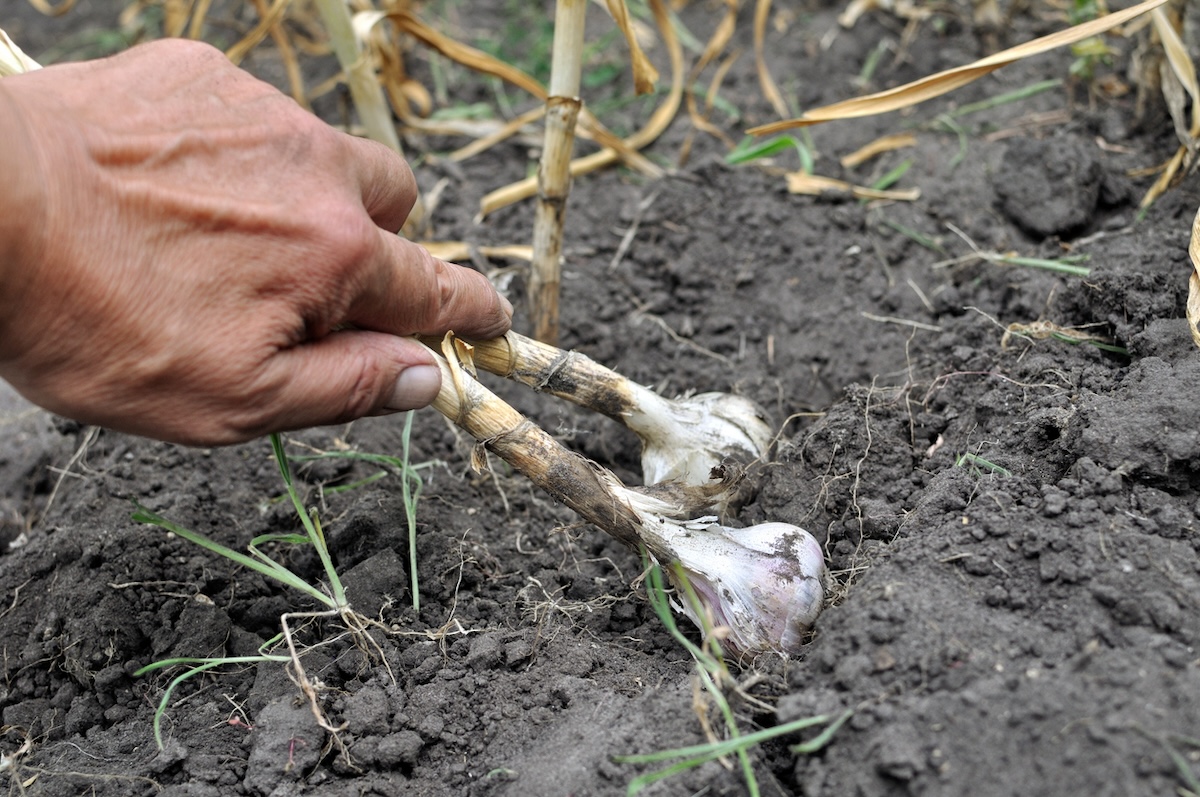
Garlic bulbs last longer than most other crops in root cellars, but you need to keep them super dry. Bulbs should be cured for about 10 to 14 days until their skins are dry and papery. Hardneck and softneck varieties of garlic both work in root cellars, but softneck garlic is what you need if you want to make garlic braids.
Shelf Life: 5 to 8 months
Our Recommendation: California Softneck Garlic Bulbs at Amazon for $6.99
Each bulb of California Softneck garlic yields between 10 and 20 spicy garlic cloves.
10. Cabbage
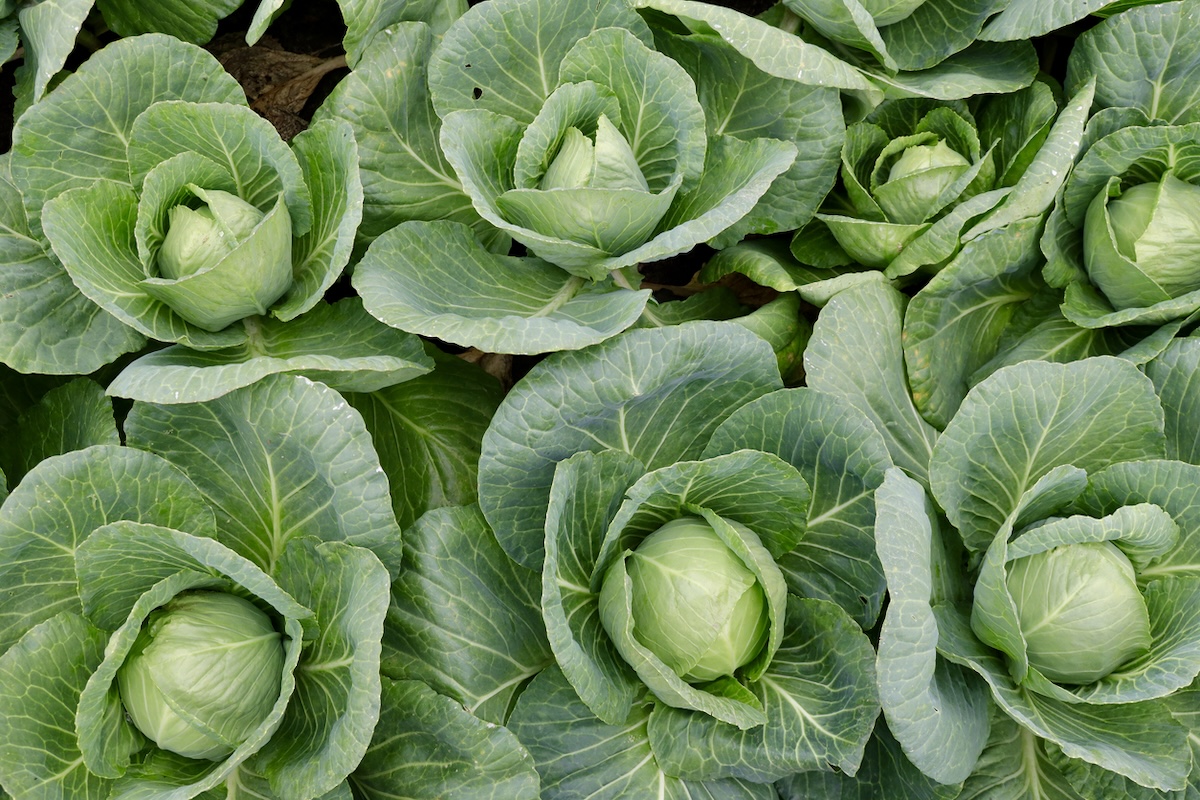
Soft cabbages, like Napa cabbage, won’t keep in root cellars, but heading cabbages will last for months when stored properly. For a long shelf life, look for red cabbages or late season cabbage varieties, and harvest them in fall after a light frost or two. Just be warned—cabbages can be a bit smelly, so you may want to separate them from other produce.
Shelf Life: 3 to 4 months
Our Recommendation: Red Acre Cabbage Seeds at Amazon for $4.85
Red Acre is a multipurpose cabbage, ideal for fresh-eating, fermenting, and root cellaring.
